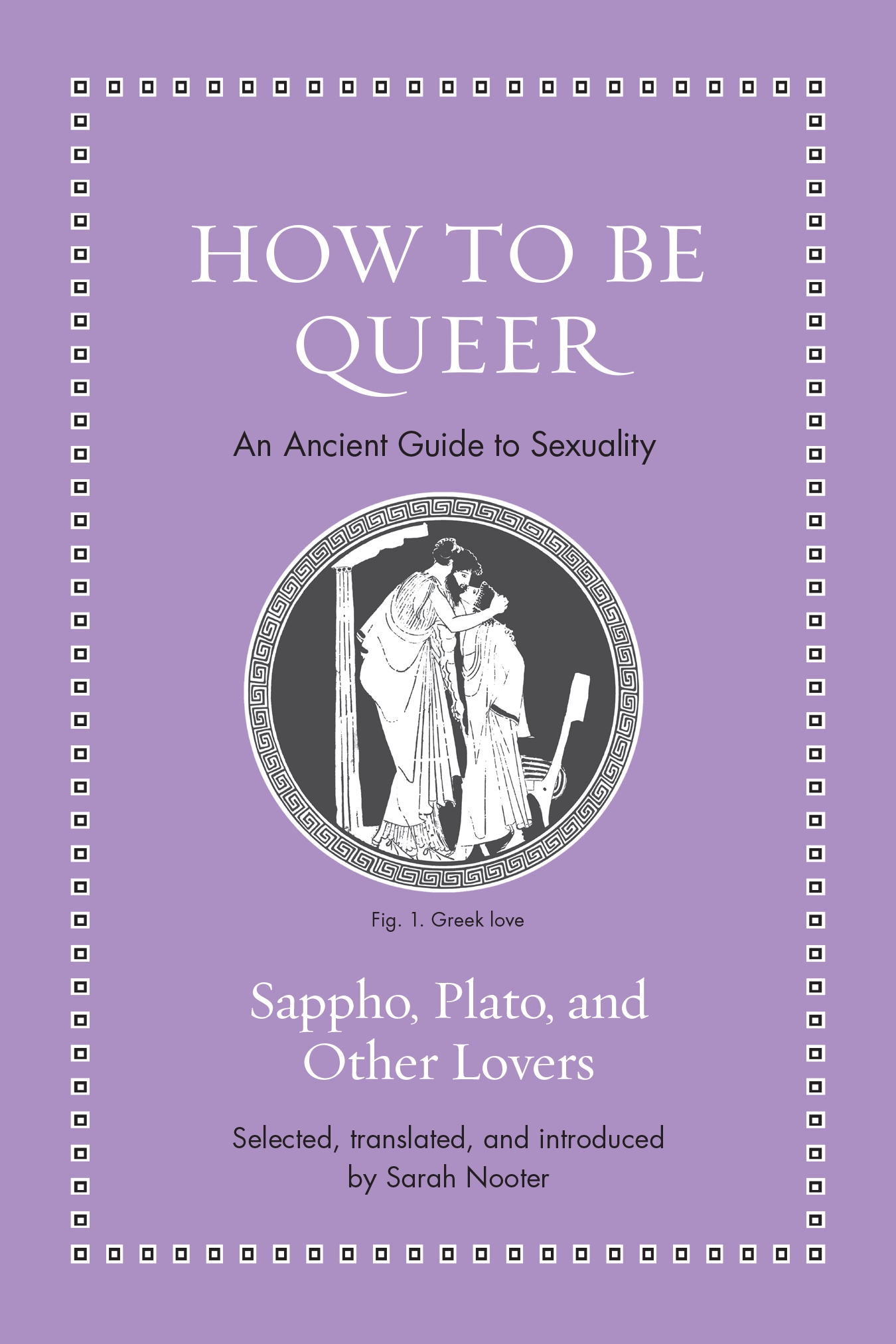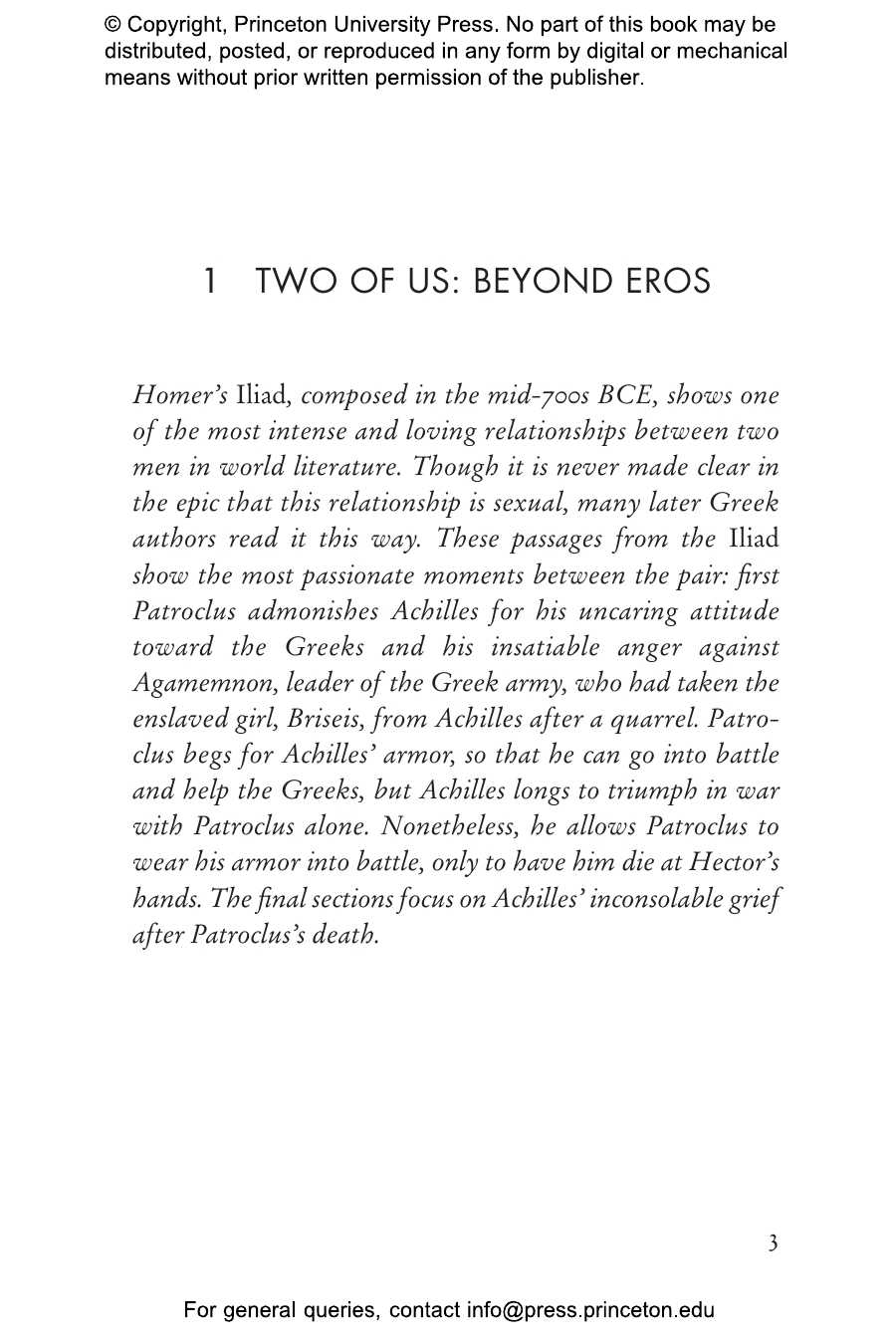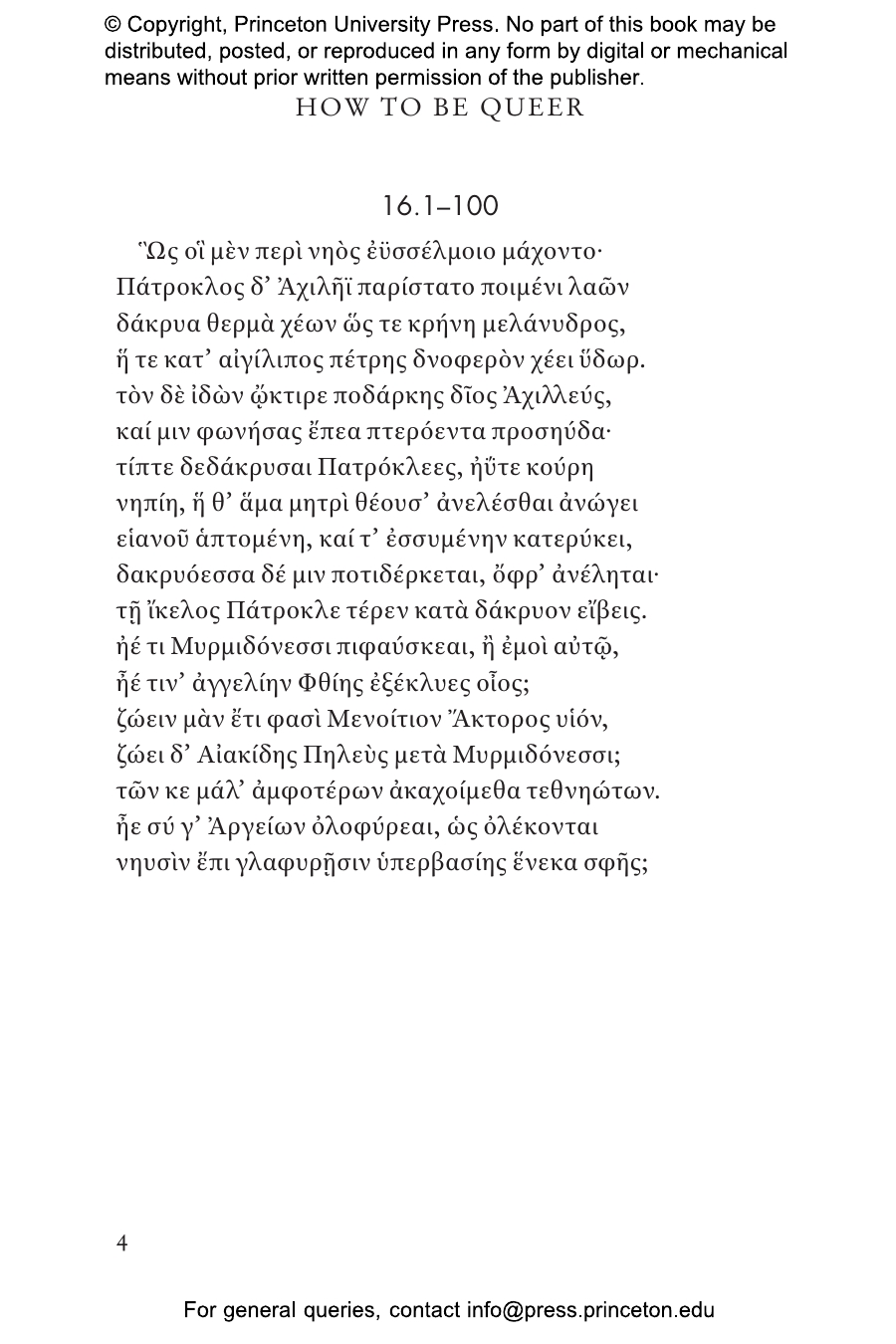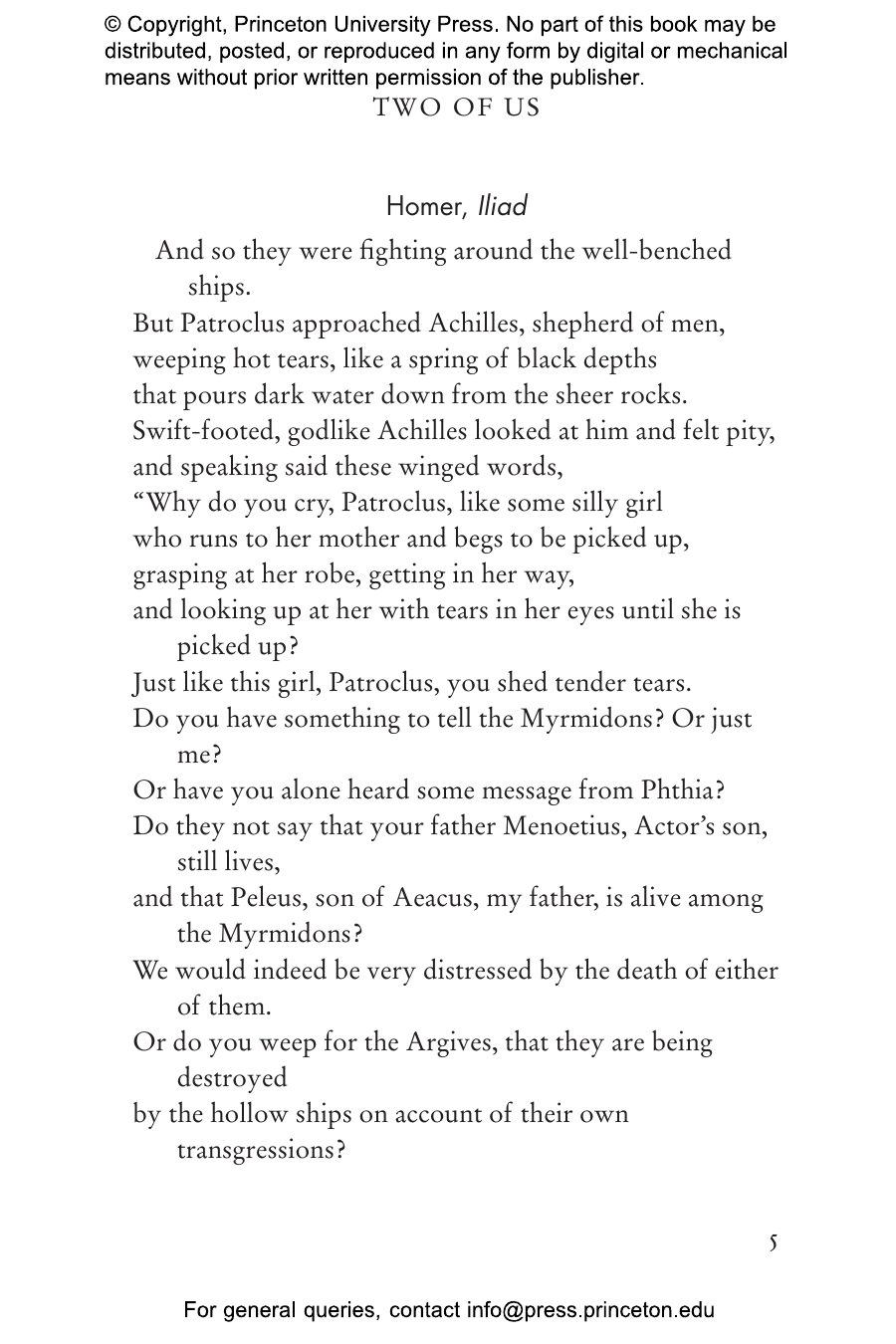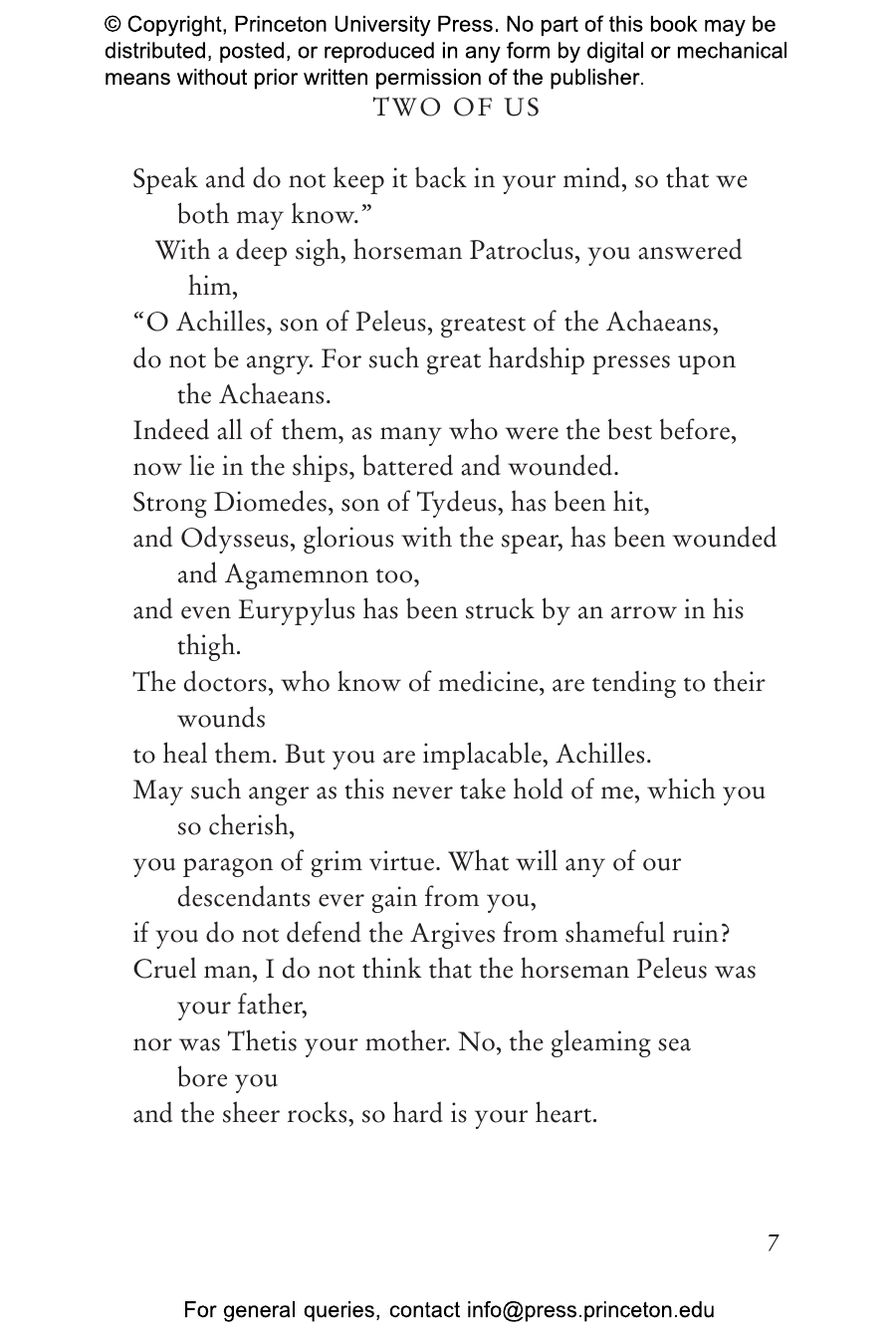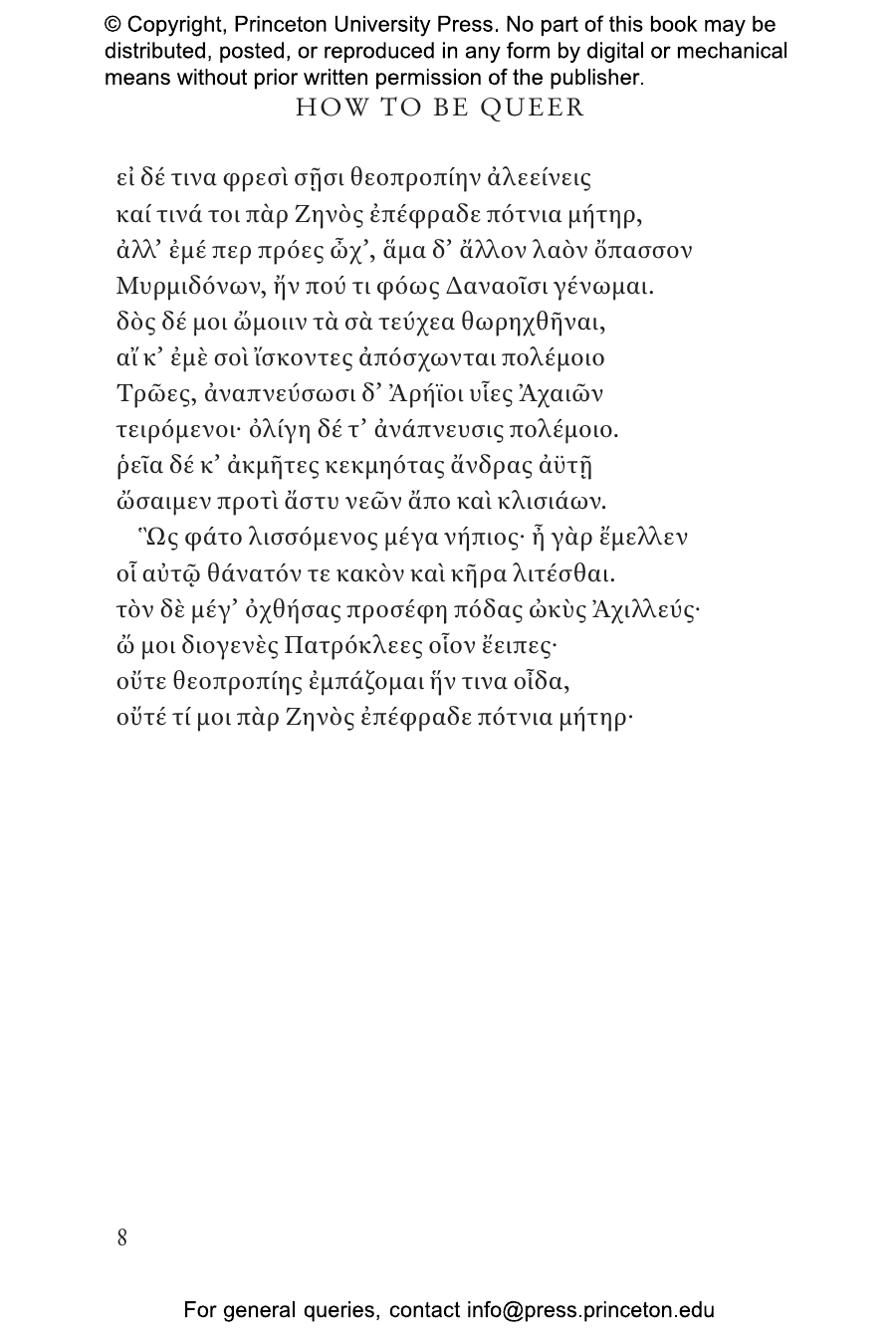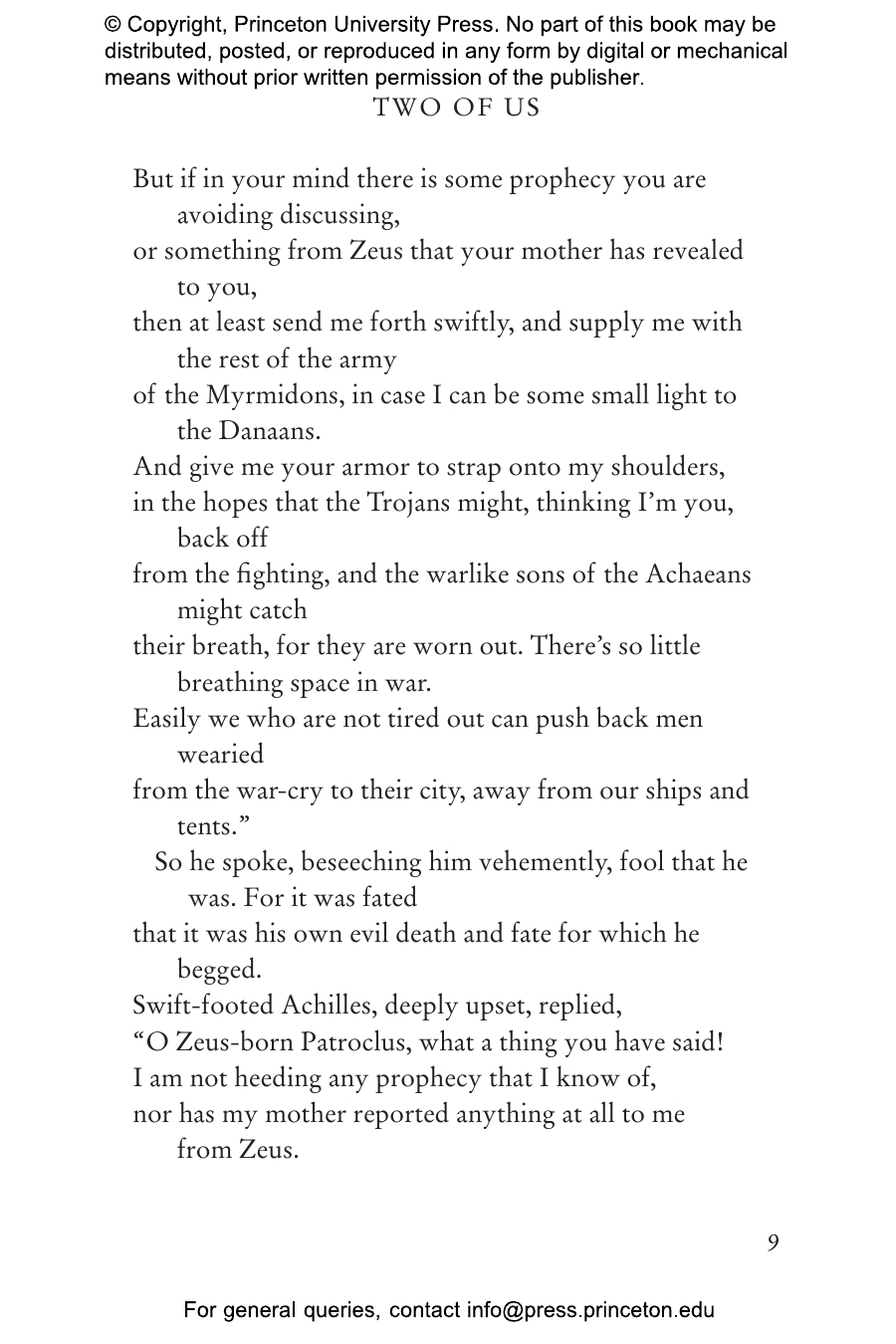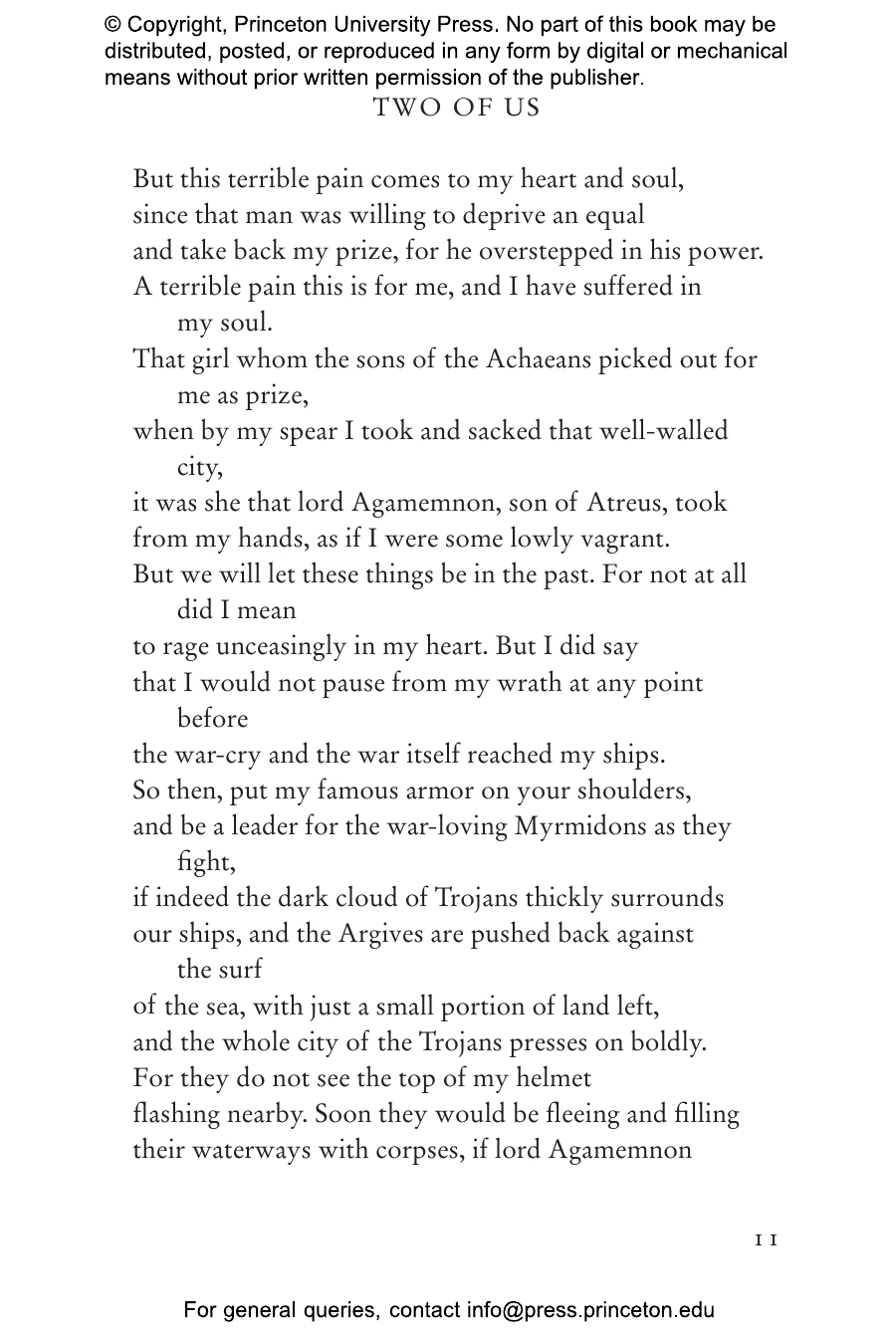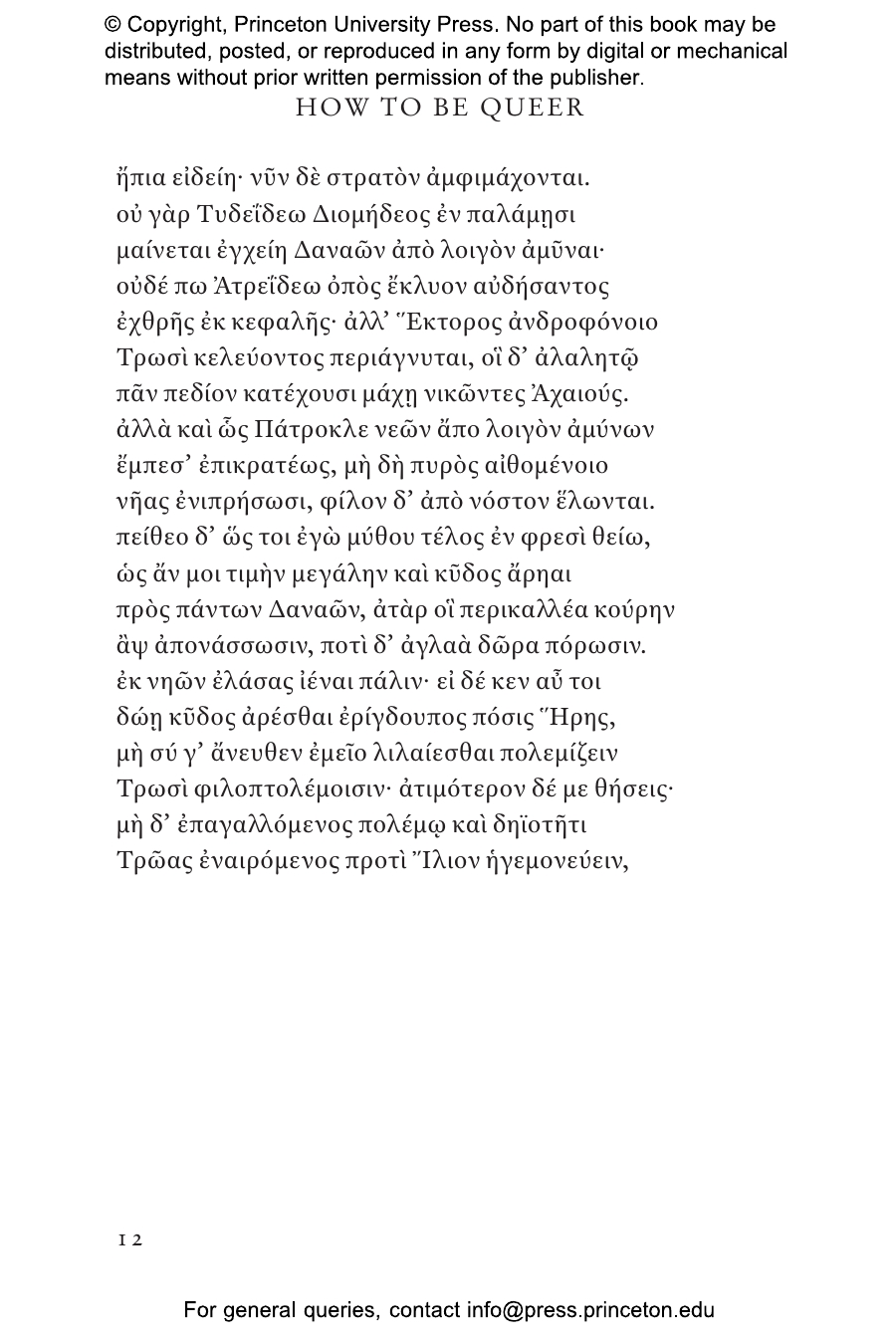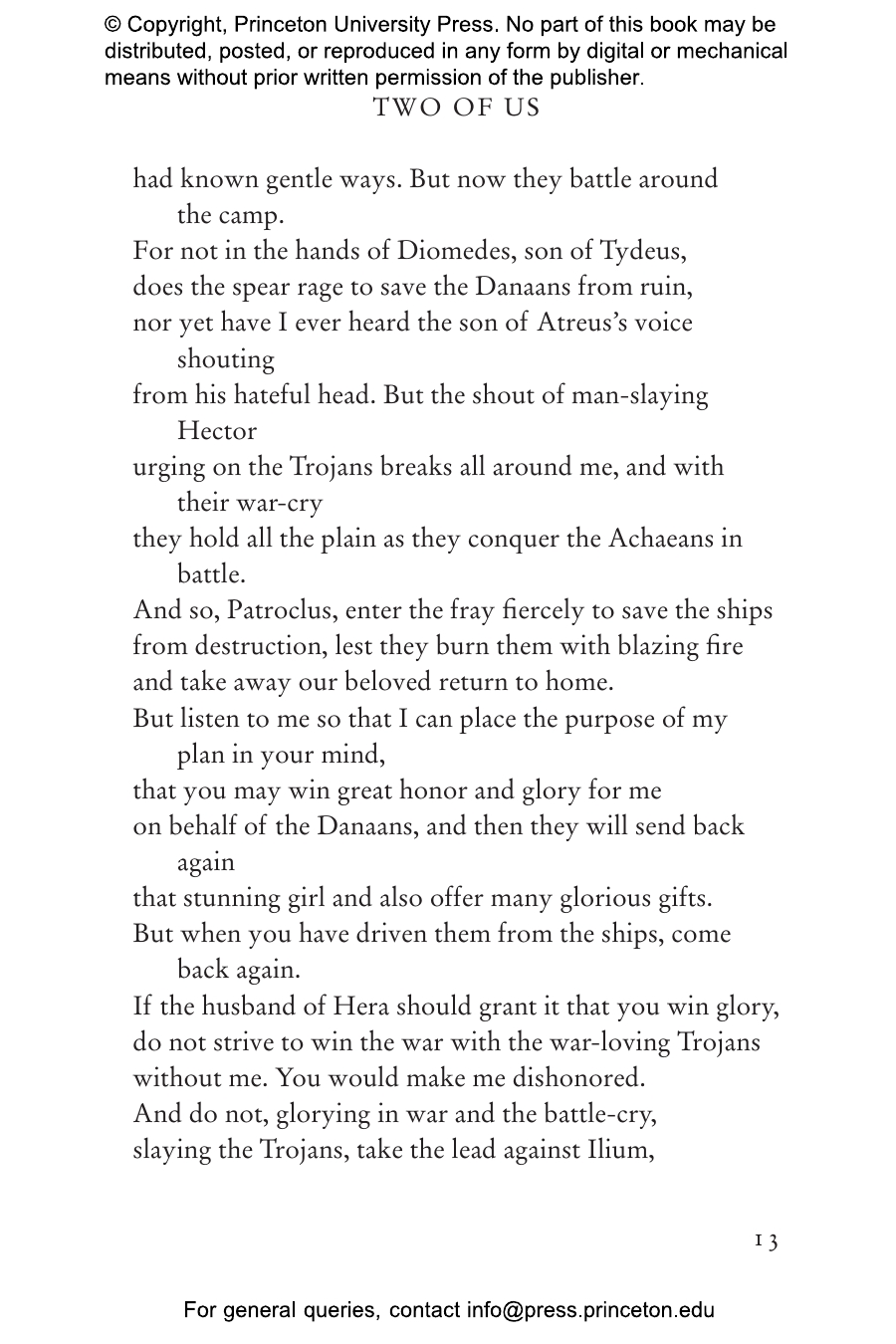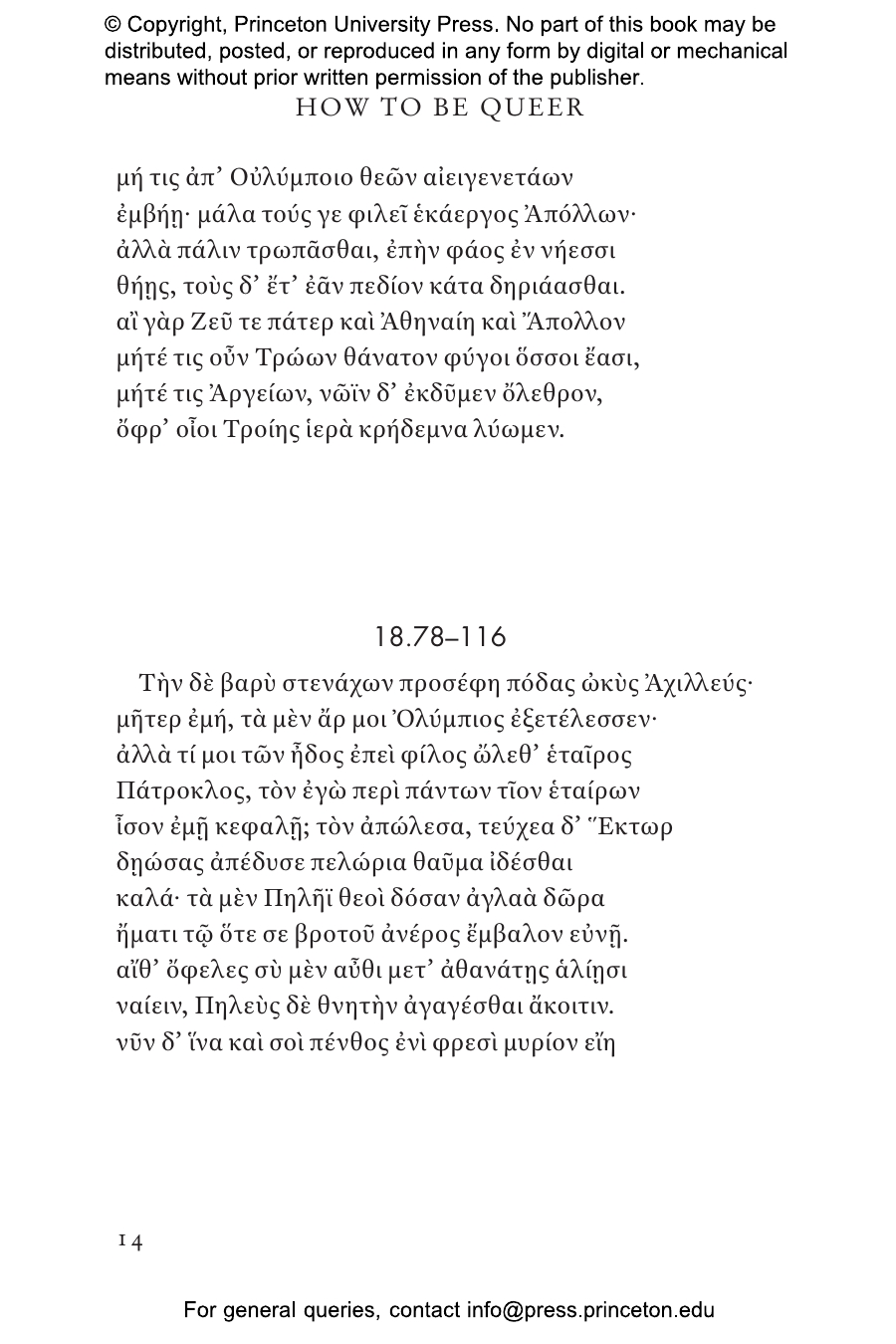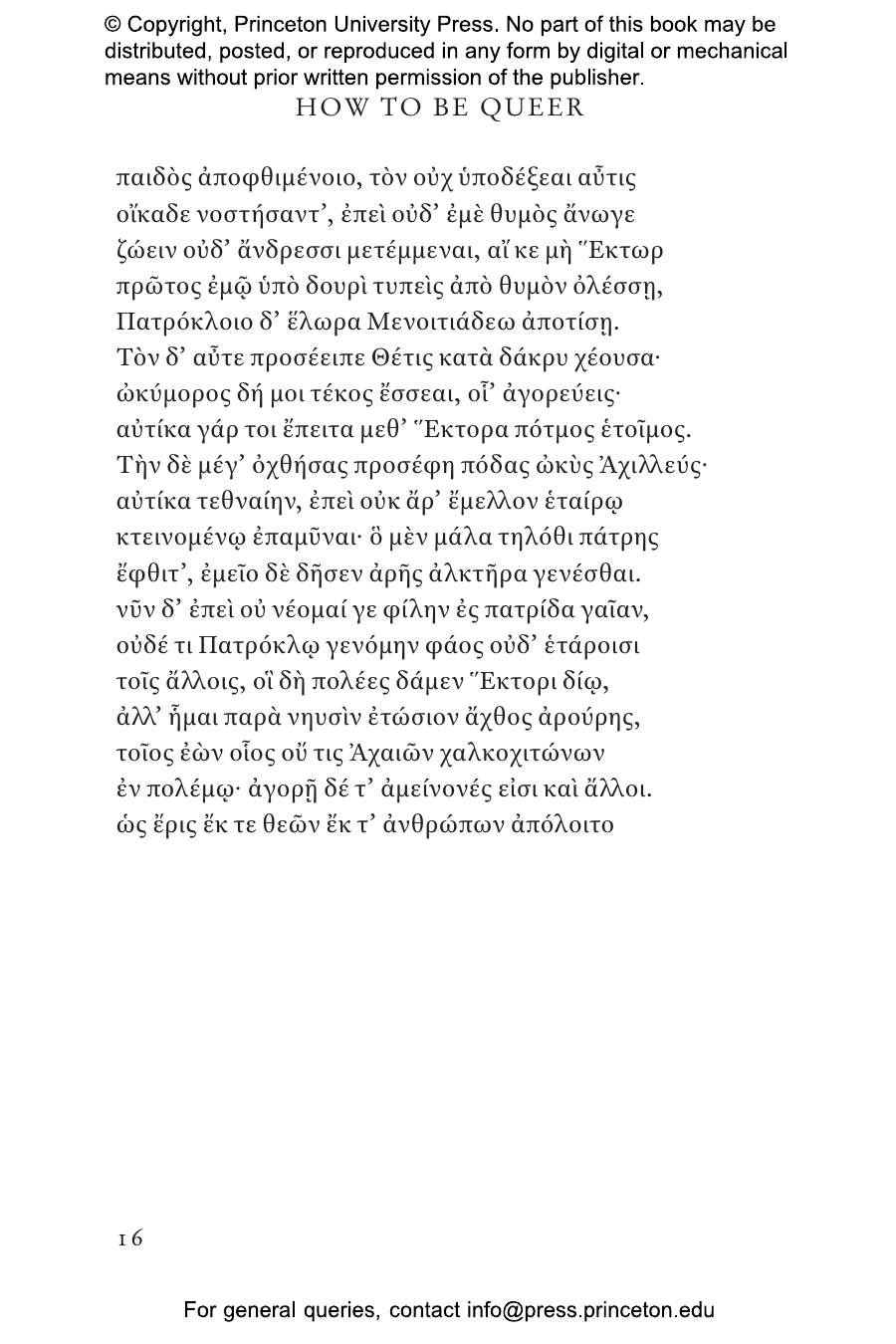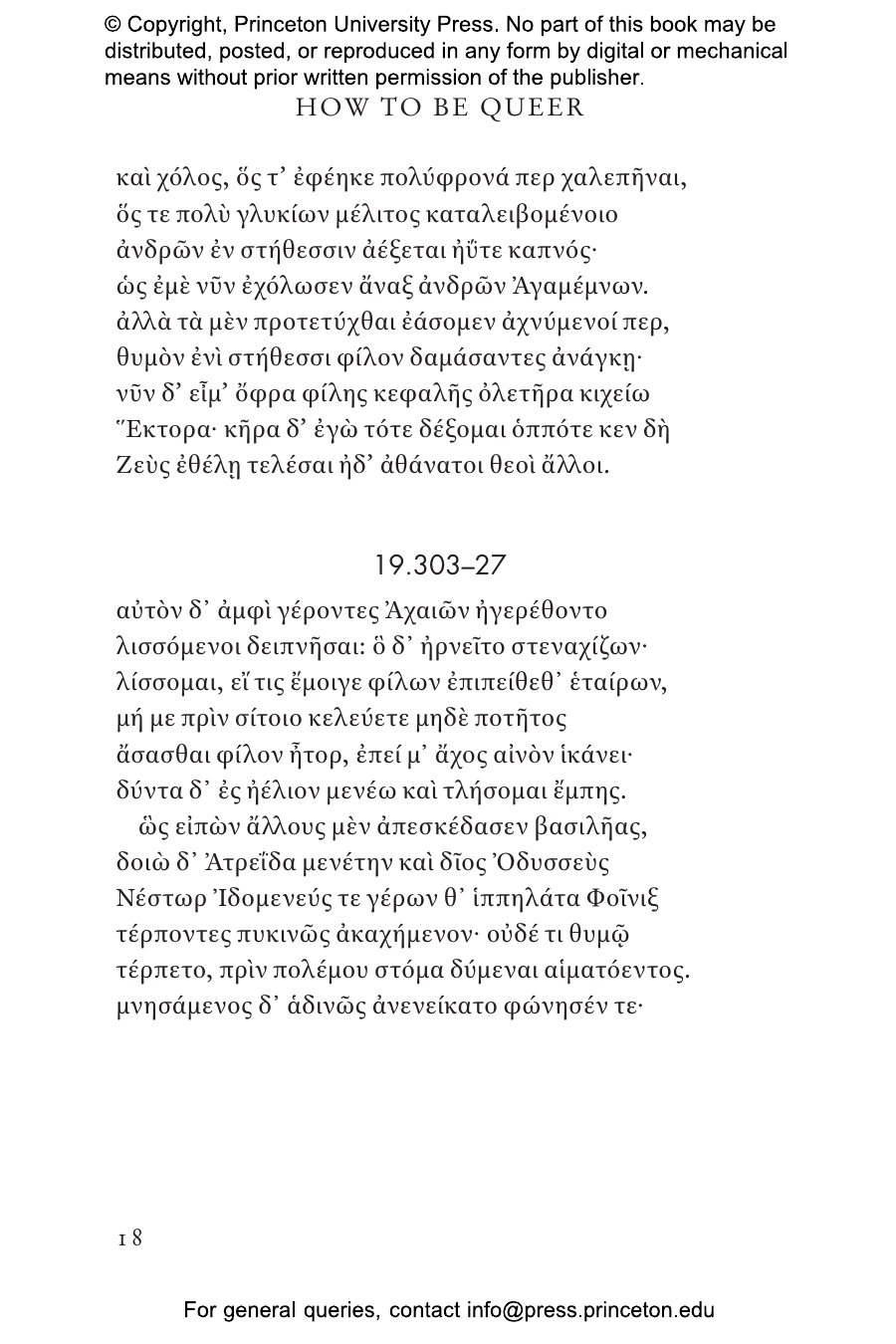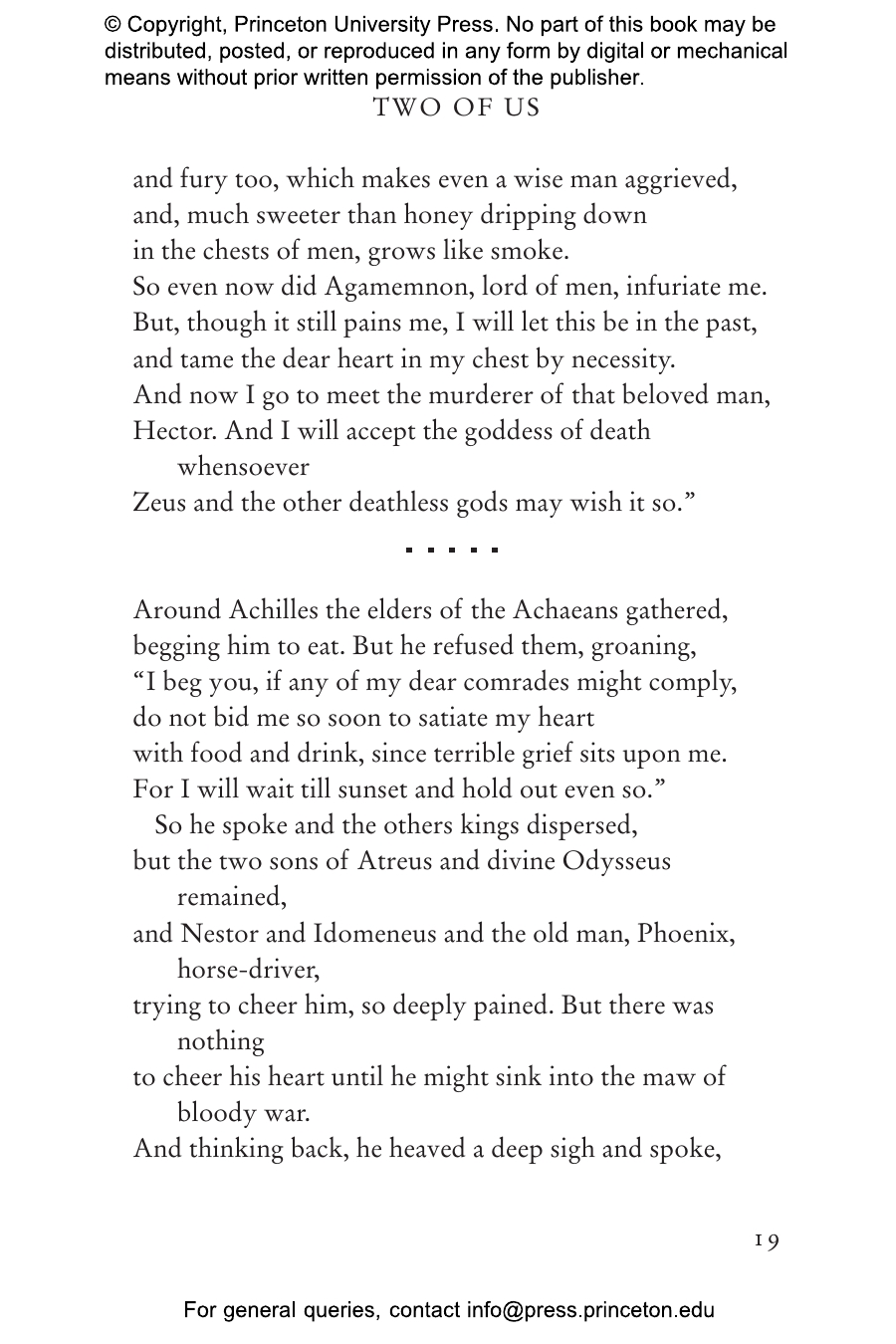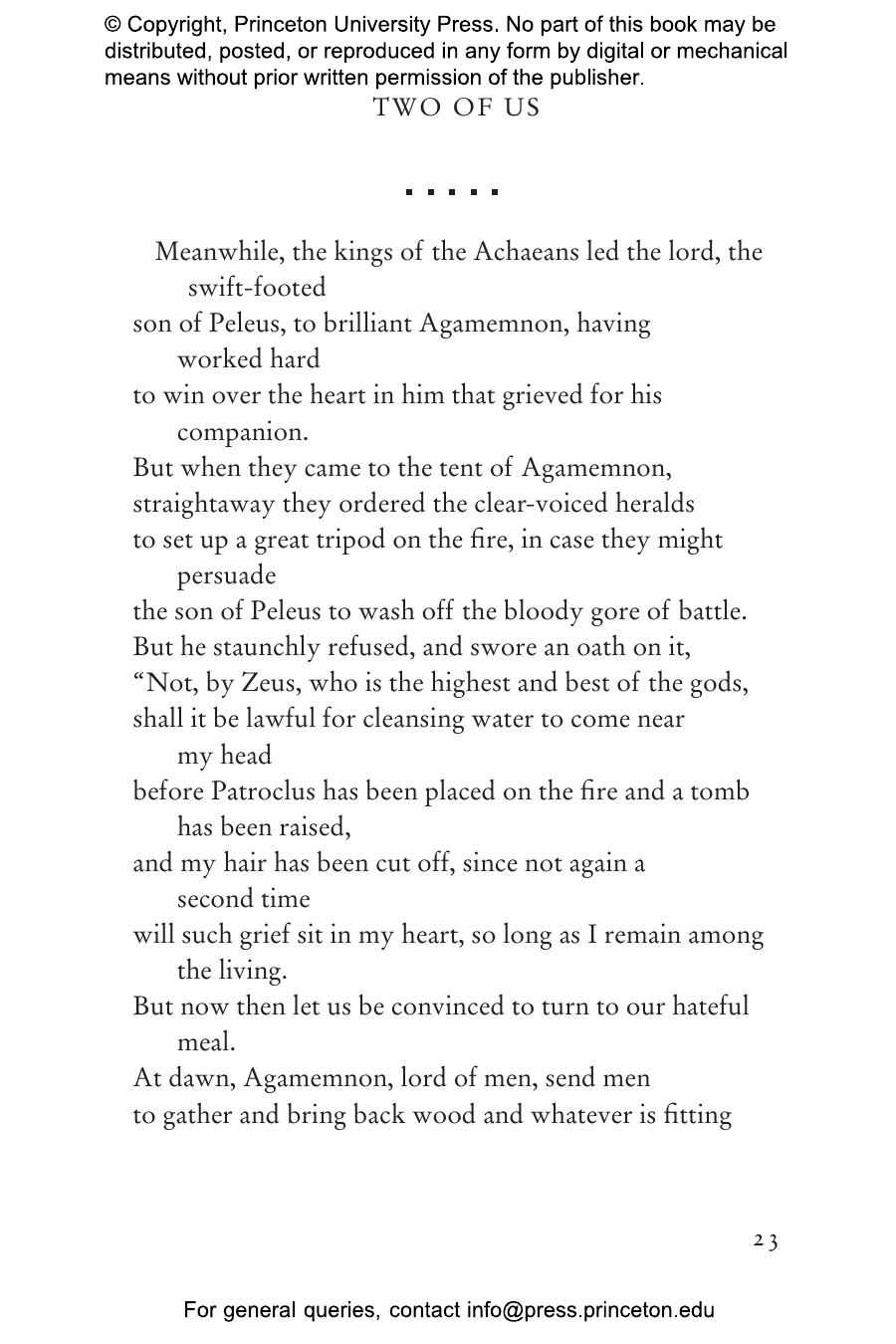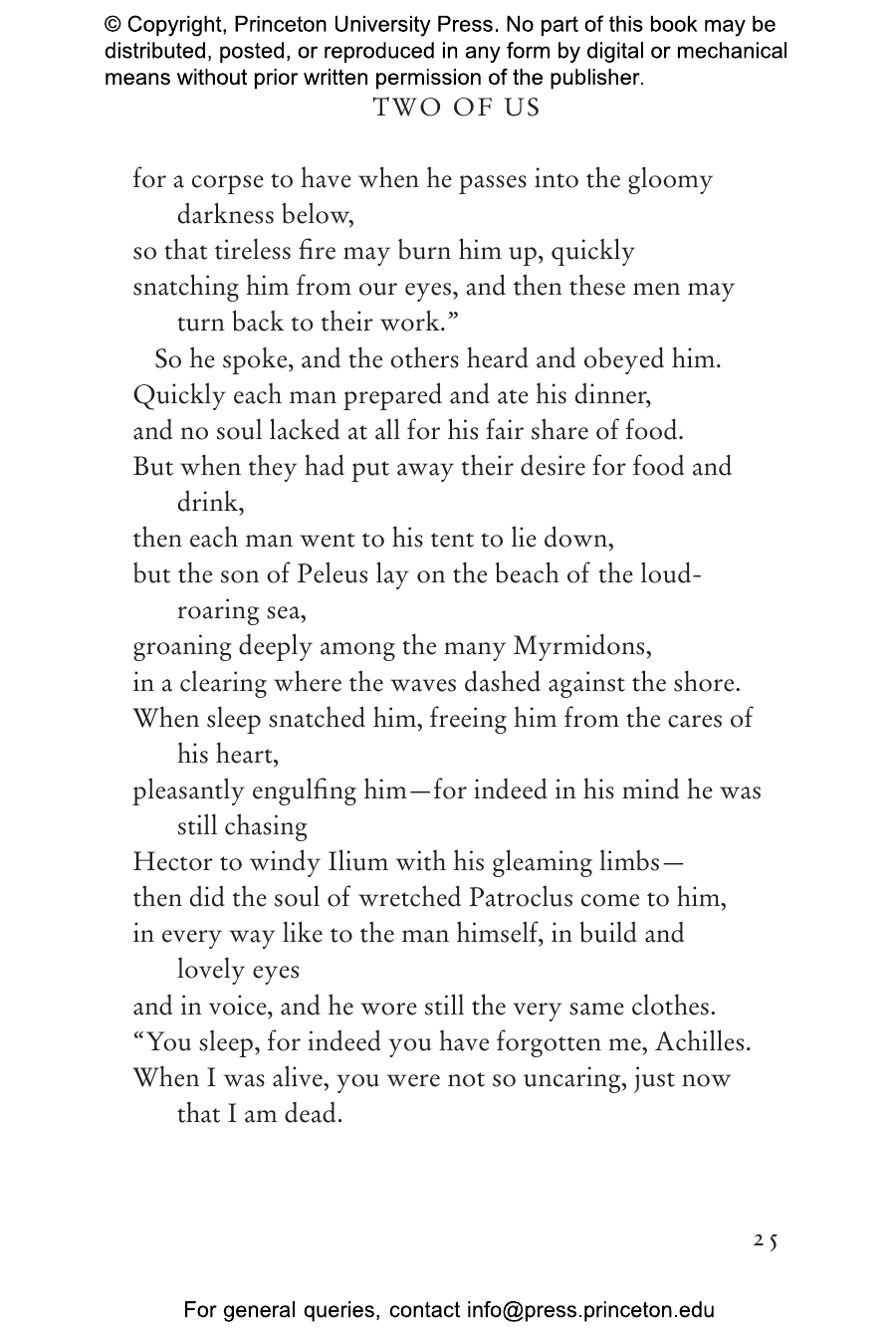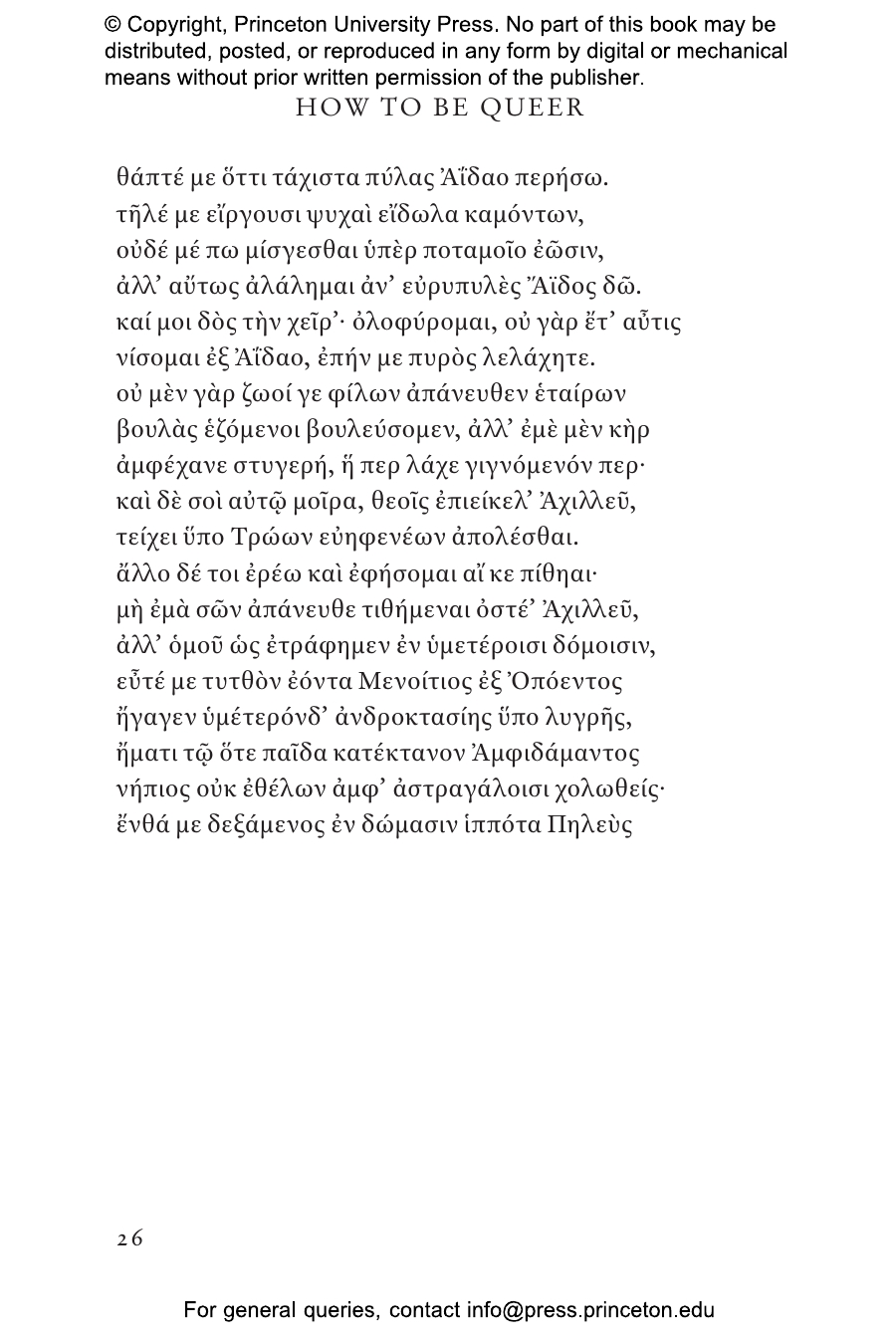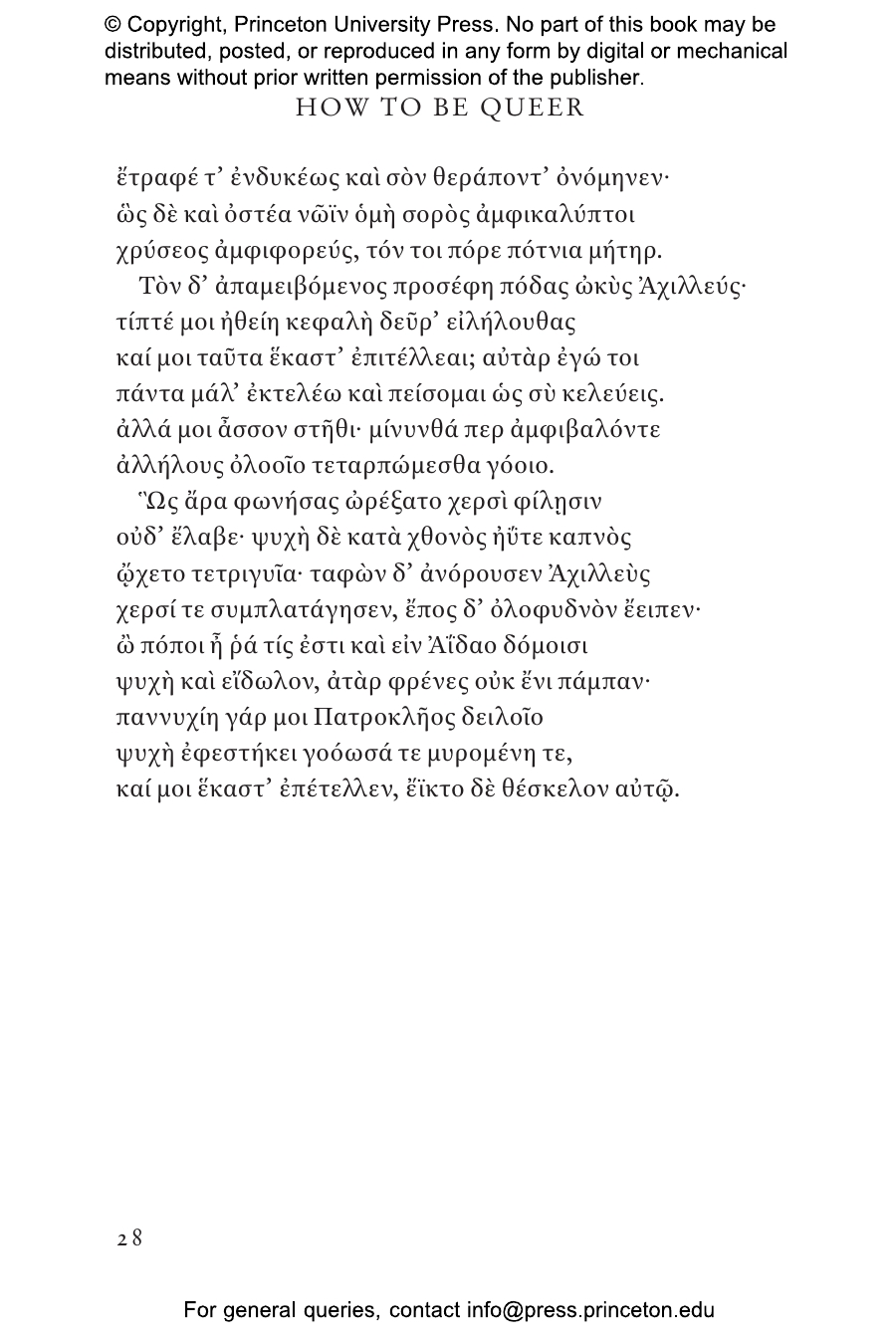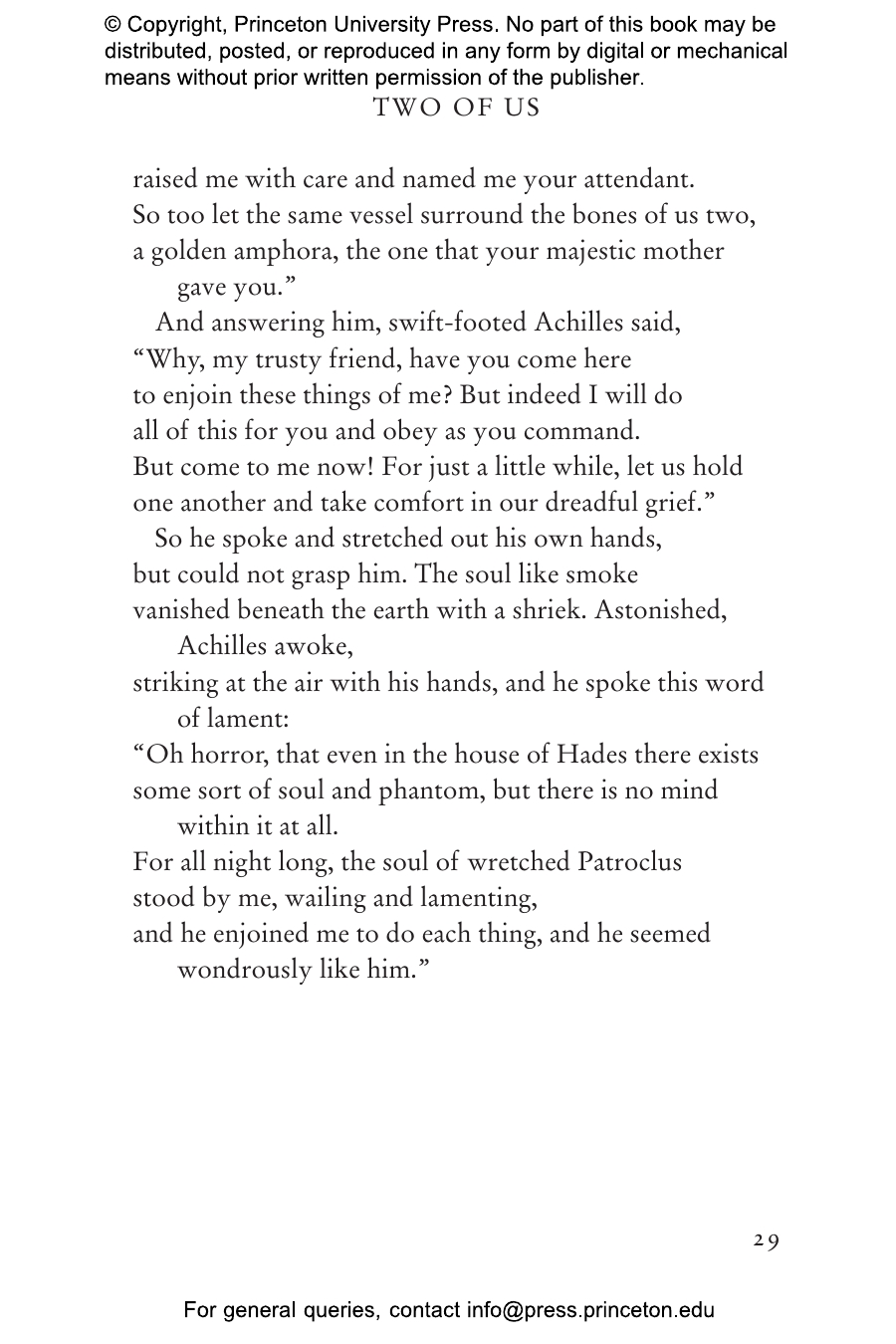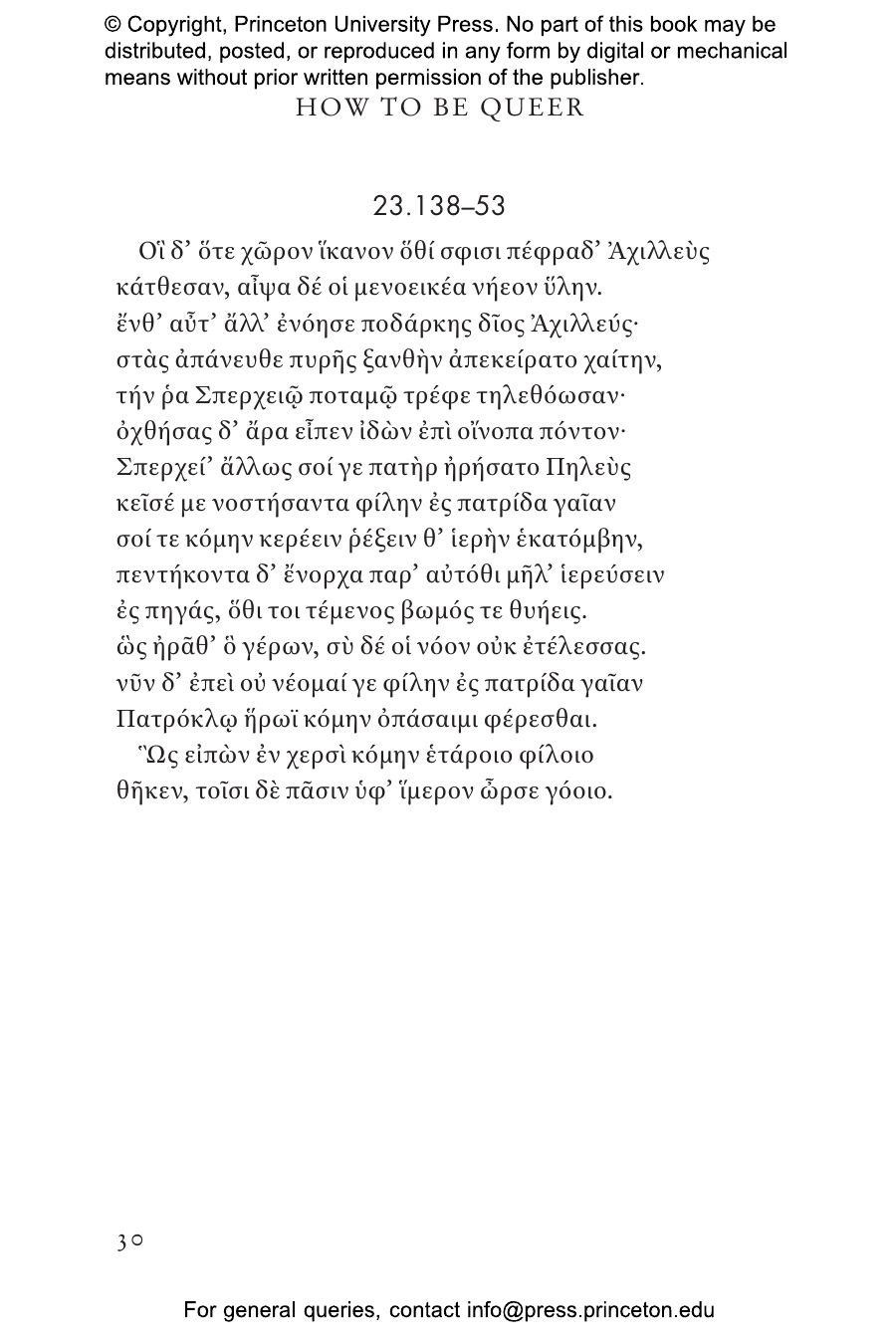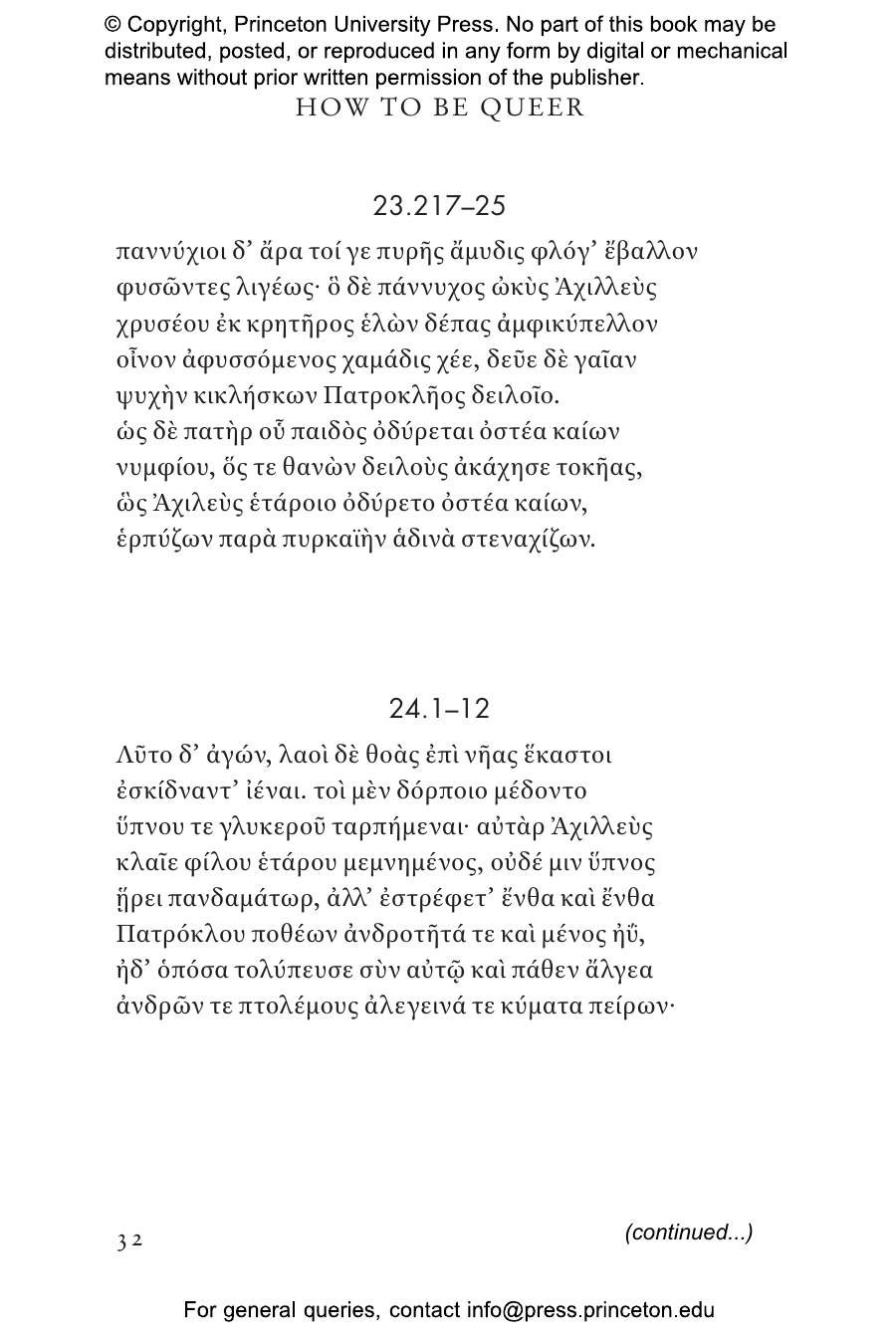Eros, limb-loosening, whirls me about again,
that bittersweet, implacable creature.
—Sappho
The idea of sexual fluidity may seem new, but it is at least as old as the ancient Greeks, who wrote about queer experiences with remarkable frankness, wit, and insight. How to Be Queer is an infatuating collection of these writings about desire, love, and lust between men, between women, and between humans and gods, in lucid and lively new translations. Filled with enthralling stories, this anthology invites readers of all sexualities and identities to explore writings that describe many kinds of erotic encounters and feelings, and that envision a playful and passionate approach to sexuality as part of a rich and fulfilling life.
How to Be Queer starts with Homer’s Iliad and moves through lyric poetry, tragedy, comedy, philosophy, and biography, drawing on a wide range of authors, including Sappho, Plato, Anacreon, Pindar, Theognis, Aristophanes, and Xenophon. It features both beautiful poetry and thought-provoking prose, emotional outpourings and humorous anecdotes. From Homer’s story of the relationship between Achilles and Patroclus, one of the most intense between men in world literature, to Sappho’s lyrics on the pleasures and pains of loving women, these writings show the many meanings of what the Greeks called eros.
Complete with brief introductions to the selections, and with the original Greek on facing pages, How to Be Queer reveals what the Greeks knew long ago—that the erotic and queer are a source of life and a cause for celebration.
Sarah Nooter is professor of classics and theater and performance studies at the University of Chicago. She is the author of Greek Poetry in the Age of Ephemerality, The Mortal Voice in the Tragedies of Aeschylus, and When Heroes Sing: Sophocles and the Shifting Soundscape of Tragedy.
"How to be Queer is an elegantly presented book, evoking thoughtful consideration of queerness and sexuality. With a constant return to modernity . . . a simple point is enforced; we are not all that different from the ancient world . . . [it] makes for a delightful reading experience, and can be enjoyed by anybody, no matter their identity."—Jaiden Griffin, Redbrick
"Delightfully provocative. . . . smartly-chosen and cleverly-organized. . . . Nooter’s translations from the Greek are impressively both faithful to the original and comprehensible and pleasant to read for the language-less"—Daniel Libatique, Bryn Mawr Classical Review
“A wonderful, wise, witty, and joyful survey of queerness in the ancient world that reminds us how—two thousand years and more before us—our ancestors often had clearer, less guilt-ridden, confused, prurient, and prudish attitudes to the rainbow of sexualities that we wrongly think unique to our age. An absolute must-read!”—Stephen Fry
“This valuable and timely collection provides an engaging and approachable introduction to queer sexuality in ancient Greece. With accessible translations of the key texts, Sarah Nooter bridges past and present to offer up something like a self-help version of classical texts for modern sexual life. Timely and compelling, How to Be Queer demonstrates the historical rootedness of what’s often touted as a modern phenomenon.”—Emily Hauser, author of How Women Became Poets: A Gender History of Greek Literature
“Sarah Nooter’s How to Be Queer is a magnificent celebration of queer love and sexuality in all its complicated, wondrous forms. It also acts as a kind of time and ideas machine, allowing queer readers to capture a reflection of themselves in the ancient world, deliciously blurring and loosening time and identity boundaries.”—Luke Edward Hall, illustrator of 300,000 Kisses: Tales of Queer Love from the Ancient World
This publication has been produced to meet accepted Accessibility standards and contains various accessibility features including a table of contents, a page list to navigate to pages corresponding to the print source version, and elements such as headings for structured navigation. Appearance of the text and page layout can be modified according to the capabilities of the reading system.
Accessibility Features
-
WCAG v2.2
-
WCAG level AA
-
Table of contents navigation
-
Print-equivalent page numbering
-
Next / Previous structural navigation
-
Landmark navigation
-
Index navigation
-
Epub Accessibility Specification 1.1
-
ARIA roles provided
-
All non-decorative content supports reading without sight
-
No known hazards or warnings


